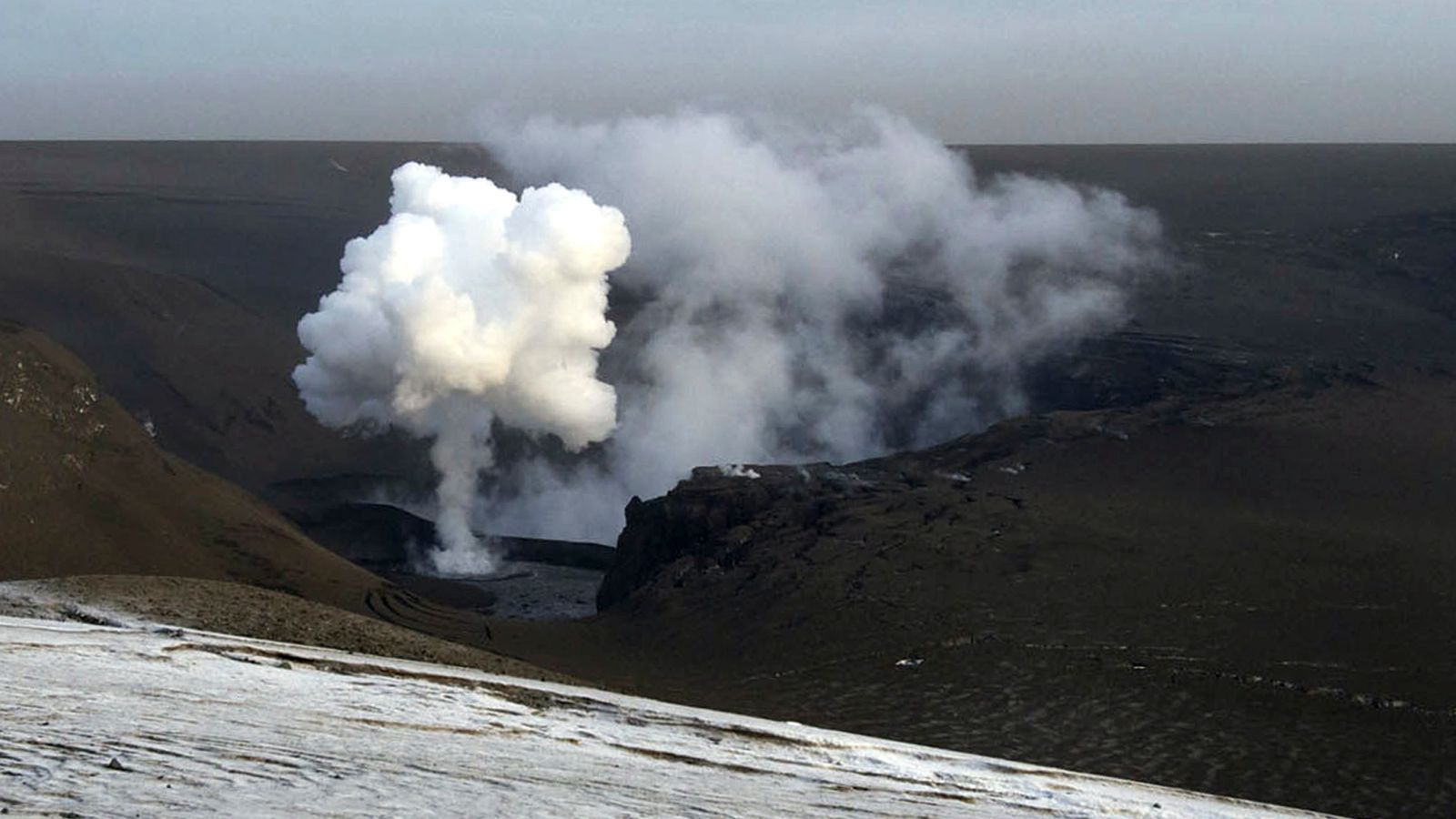Iceland has raised the alert level for an eruption of its most active volcano following several small earthquakes.
Known as Grimsvotn, the volcano is buried beneath a glacier in an uninhabited and relatively remote part of the island.
The Icelandic Meteorological Office has raised the alert level from “yellow” to “orange”, citing heightened seismic activity and glacial melting around the volcano itself.
The alert levels – which are designed to inform the aviation industry about the risks of an eruption – go up to red, which mean an eruption is considered imminent, and an ash cloud may disrupt air traffic.
Several earthquakes have recently been measured near the volcano, although the Icelandic Meteorological Office said it had not detected a rise in the volcano’s magma.
“This seismic activity may be due to the decreasing pressure above the volcano, as the floodwaters have been released from the subglacial lake,” it said.
This led to something known in Iceland as “Jokulhlaup”, glacial flooding caused by geothermal heating and subglacial volcanic eruptions.
Iceland tourist authorities mock Mark Zuckerberg in latest promotional video
Climate change: Icelandic glacier melting faster than it can recover, experts warn
Ongoing Iceland volcanic eruption now the longest in 50 years
According to the meteorologists, the ice cap on Grimsvotn’s sub-glacial lake had subsided by about 77 metres, and most of the water is now believed to have left.
“Examples are that volcanic eruption can occur in Grimsvotn after water is drained from there,” the meteorologists said.
“It is believed that volcanic eruptions can occur after sudden pressure release due to reduced water level in the lake.
“The last time something similar happened was in 2004, 1934 and 1922.”
When did the volcano last erupt and will it cause disruption?
Grimsvotn last erupted in May 2011, spraying volcanic plumes 12km (seven miles) into the skies.
During that eruption, an ash cloud rose 20km (12 miles) high and led to the cancellation of around 900 flights out of 90,000 in Europe.
This was considered a minor disruption compared to that caused by the eruptions of Eyjafjallajokull a year before.
Because of the high silica content of the Eyjafjallajokull ash cloud in 2010, roughly 100,000 flights were cancelled and more than 10 million passengers being stranded.
The 2011 Grimsvotn eruption was the largest in Iceland for 50 years, breaking through the glacier with pulsating explosions.






















